From Salento some of the finest Italian wines!
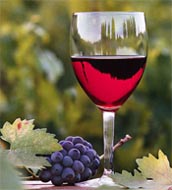 Salento is one of the most important wine production areas of Italy. On the national and international market you can find D.O.C. (territorial based certification) wines produced in Salice Salentino, Copertino, Leverano, Alezio, Matino, Galatina and Squinzano, as well as I.G.T. (indication of geographic territory) wines. Though in the past they were not so popular, some varieties of wine are very appreciated nowadays, for example Negroamaro. Some of the best rosés in the world, in fact, are made by mixing “malvasie nere” varieties from Lecce area and the Negroamaro. Another important species of vine is Aleatico, very sweet, like a liqueur. Salento is one of the most important wine production areas of Italy. On the national and international market you can find D.O.C. (territorial based certification) wines produced in Salice Salentino, Copertino, Leverano, Alezio, Matino, Galatina and Squinzano, as well as I.G.T. (indication of geographic territory) wines. Though in the past they were not so popular, some varieties of wine are very appreciated nowadays, for example Negroamaro. Some of the best rosés in the world, in fact, are made by mixing “malvasie nere” varieties from Lecce area and the Negroamaro. Another important species of vine is Aleatico, very sweet, like a liqueur.
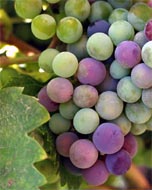 Then there are Malvasia Nera, Malvasia Bianca and the Primitivo; Primitivo di Manduria has ancient origins and is used as a brightly coloured blending wine. Also many non-local varieties have become popular in Salento, such as the Chardonnay and Sauvignon. Wine cooperatives always try to improve the quality of their wines and to sell them at affordable prices. Then there are Malvasia Nera, Malvasia Bianca and the Primitivo; Primitivo di Manduria has ancient origins and is used as a brightly coloured blending wine. Also many non-local varieties have become popular in Salento, such as the Chardonnay and Sauvignon. Wine cooperatives always try to improve the quality of their wines and to sell them at affordable prices.
The production is always growing and well-known wines are being produced by big private wine companies; some of them have also received lots of prizes and recognitions during events concerning wine production: Leone De Castris, Bacile di Castiglione are among them. 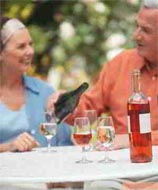 Every day lots of local wines are exported, therefore we recommend you to taste them. Every day lots of local wines are exported, therefore we recommend you to taste them.
One of the tastiest D.O.C. wines of Salento is Leverano D.O.C., a wine produced from Negroamaro and White and Black Malvasia.
Lots of enteprising local wine producers are always improving wine production, investing largely to make their warehouses more modern and well equipped; this has increased the quality of wines, though keeping prices controlled.
Both in Italy and abroad important awards have been given to many producers, such as Leone De Castris, Conti Zecca, Masseria Monaci, Rosa del Golfo, Taurino, Cantele, Antica Masseria del Sigillo, Valle dell’Asso and Santi Dimitri.
Extra Virgin Olive Oil at the best
Extra virgin Olive Oil production is one of the 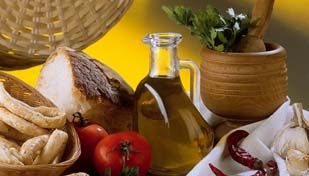 oldest activities of Salento in fact olive oil is often called the “gold” of Salento; here there are more than ten million olive trees which contribute to a simple, nourishing and healthy diet, based on olive oil, bread, vegetables, dried legumes and wine. Oil is even used to prepare some beauty products. oldest activities of Salento in fact olive oil is often called the “gold” of Salento; here there are more than ten million olive trees which contribute to a simple, nourishing and healthy diet, based on olive oil, bread, vegetables, dried legumes and wine. Oil is even used to prepare some beauty products.
Oil of Salento is very healthy also because no artificial treatments are carried out and it does not contain any dangerous chemicals. Surely it is not so well known in the rest of Italy as wine, but we hope that in the future its fame may increase all over Italy. Therefore we suggest you to taste it and spread its high quality and genuineness.
The techniques of oil production have varied in the course of the time, though still today it is 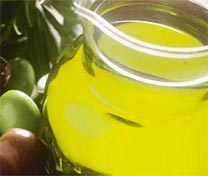 possible to see the “trappeti” which use the ancient instruments for grinding, such as the press and the grindstone. Olive oil is classified into three categories: extra-virgin oil, virgin oil and brilliant (according to its acidity). It is traditionally first tasted just in the oil mill, generally with some bread, in order to appreciate its Mediterranean savour. possible to see the “trappeti” which use the ancient instruments for grinding, such as the press and the grindstone. Olive oil is classified into three categories: extra-virgin oil, virgin oil and brilliant (according to its acidity). It is traditionally first tasted just in the oil mill, generally with some bread, in order to appreciate its Mediterranean savour.
In Salento the recognition DOP (Protected Denomination of Origin) has been given to the oil produced in the area of Lecce and Terra d’Otranto. In fact by the roads you can see lots of signs of ancient underground oil mills, where you can see the rudimental and primitive machinery which once were pulled by animals.
Oil is sold in food shops and in supermarkets at reasonable prices, put in bottles or cans, but you can buy it (of course at a lower price) in olive oil mills scattered in the province.
| |